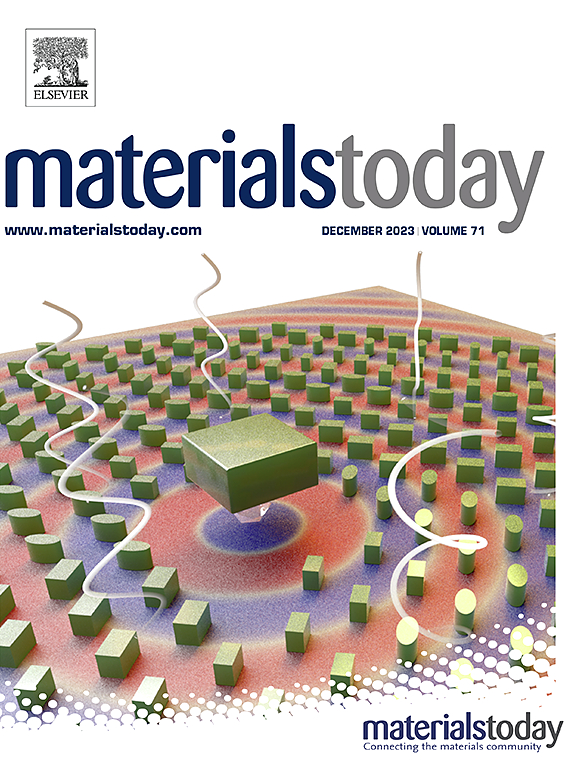Revolutionizing ion mobility spectrometry: Rapid and cost-efficient manufacturing of drift tubes using additive manufacturing with coaxial filament
IF 21.1
1区 材料科学
Q1 MATERIALS SCIENCE, MULTIDISCIPLINARY
引用次数: 0
Abstract
Ion mobility spectrometry (IMS) is an analytical separation and detection method in which ions are accelerated by an electric field and separated based on their different ion mobilities. The manufacturing of these kinds of analytical devices takes an immersive amount of time and costs and is usually performed by hand. Additive manufacturing enables fast and easy fabrication of IMS devices from plastic. In recent works established drift time ion mobility spectrometers (DTIMS devices) were replicated using 3D printing technology by making use of functionalization through a conductive printing material. However, some electrical features such as the required resistance gradient were still set via conventional resistors. Therefore, new drift tube designs are presented with the intention of reducing the components and material used. For this purpose, three different drift tube types were fabricated, which were characterized and compared to a 3D printed drift tube with ring electrodes. Additionally, the analytical reproducibility was checked by comparing triplicates of the respective drift tube types. Cyclic olefine copolymer, which is particularly well suited for analytics due to its resistance to acids, alkalis and polar solvents, was used to manufacture the drift tubes. As a novel approach, a specially extruded coaxial filament is used, revolutionizing the manufacturing process of drift tubes in terms of effort, cost and time as the functionalization of the printed parts is already partly outsourced to the raw material.

革命性的离子迁移率光谱法:使用同轴灯丝增材制造快速和经济高效地制造漂移管
离子迁移率光谱法(IMS)是一种通过电场加速离子并根据其不同的离子迁移率分离离子的分析分离和检测方法。制造这些类型的分析设备需要大量的时间和成本,并且通常是手工完成的。增材制造可以快速,轻松地从塑料制造IMS设备。在最近的工作中,建立漂移时间离子迁移谱仪(DTIMS设备)使用3D打印技术通过导电打印材料进行功能化复制。然而,一些电气特性,如所需的电阻梯度,仍然是通过传统的电阻设置。因此,新的漂移管设计提出了减少组件和材料使用的意图。为此,制作了三种不同类型的漂移管,对其进行了表征,并与带有环形电极的3D打印漂移管进行了比较。此外,通过比较各自漂移管类型的三个副本来检查分析的重复性。环烯烃共聚物,由于其耐酸、碱和极性溶剂,特别适合于分析,被用来制造漂移管。作为一种新颖的方法,使用了一种特殊的挤压同轴灯丝,在努力,成本和时间方面彻底改变了漂移管的制造过程,因为打印部件的功能化已经部分外包给原材料。
本文章由计算机程序翻译,如有差异,请以英文原文为准。
求助全文
约1分钟内获得全文
求助全文
来源期刊

Materials Today
工程技术-材料科学:综合
CiteScore
36.30
自引率
1.20%
发文量
237
审稿时长
23 days
期刊介绍:
Materials Today is the leading journal in the Materials Today family, focusing on the latest and most impactful work in the materials science community. With a reputation for excellence in news and reviews, the journal has now expanded its coverage to include original research and aims to be at the forefront of the field.
We welcome comprehensive articles, short communications, and review articles from established leaders in the rapidly evolving fields of materials science and related disciplines. We strive to provide authors with rigorous peer review, fast publication, and maximum exposure for their work. While we only accept the most significant manuscripts, our speedy evaluation process ensures that there are no unnecessary publication delays.
 求助内容:
求助内容: 应助结果提醒方式:
应助结果提醒方式:


